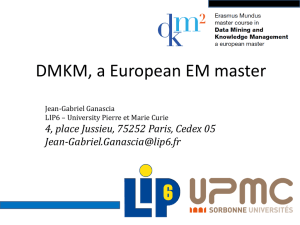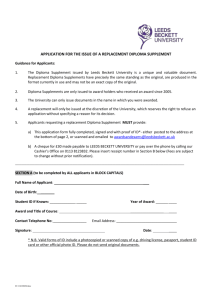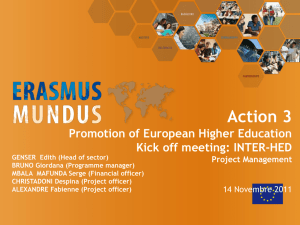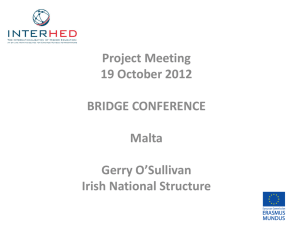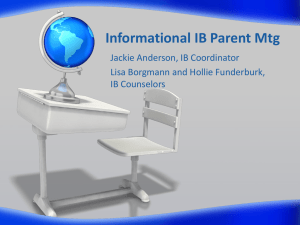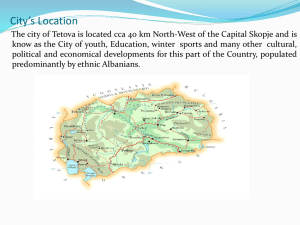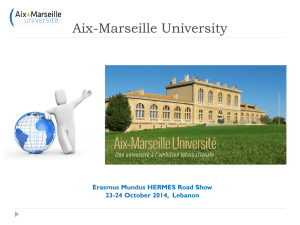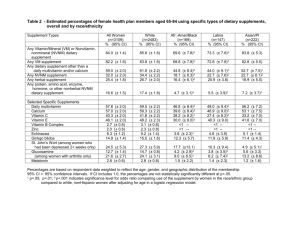Diapositiva 1 - Erasmus Mundus
advertisement
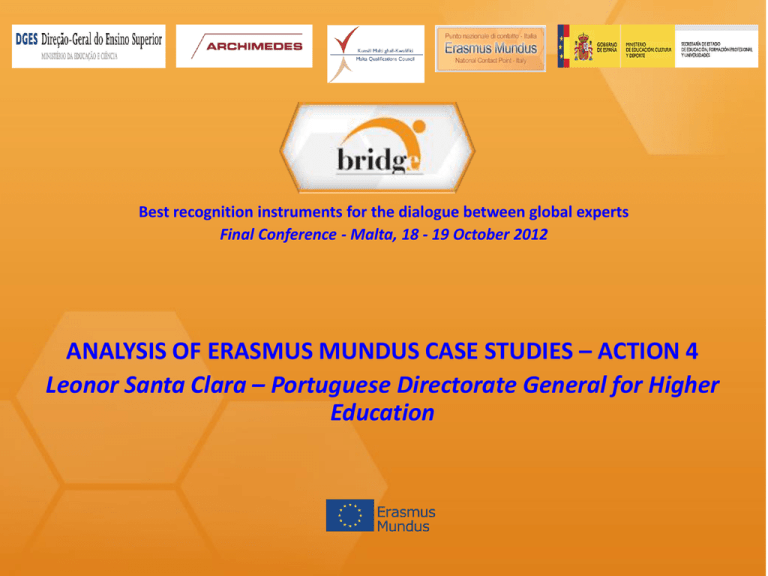
Best recognition instruments for the dialogue between global experts Final Conference - Malta, 18 - 19 October 2012 ANALYSIS OF ERASMUS MUNDUS CASE STUDIES – ACTION 4 Leonor Santa Clara – Portuguese Directorate General for Higher Education The Objective of Action 4 Analysis of 5 Erasmus Mundus Master Courses (EMMC) Assess + collect information on issues related to recognition during different phases of the life of these courses . 2 How to choose the courses? Some common criteria agreed: • participation of an institution of the country responsible for the case study; • course functioning in the academic year 2011-2012; • renewed courses, preferably; • joint, double and multiple degrees; • previous information of eventual problems; • diversified fields of study; • Involvement of institutions of third countries + diversify countries participating. 3 The chosen courses EMDiReB – Erasmus Mundus Master in Diagnosis and Repair of Buildings EMLE - Master in Law and Economics GeoTech – Master of Science in Geospatial Technologies IMEC - International Master’s Programme in Early Childhood Education and Care NordSecMob - Master's programme in Security and Mobile Computing 4 Diversity? • Covering 4 scientific areas; • 1 course involving third country HEI but not awarding degree; • Various types of degrees awarded; • Courses with 60, 90 and 120 ECTS; • Courses with problems but also successful ones; • 16 European countries and 2 third countries; • Only 1 course coordinated by a Bridge partner; • 4 selected in phase 1 of EM (3 renewed) and 1 selected in phase 2. 5 What we analysed Creation of the joint course Degree awarded and Diploma Supplement Selection of students and academics Recognition of the course/degree in other countries 6 Creation of the joint course Implications of different HE systems and national legislation • Course components (ECTS, thesis requirements, etc..) • National accreditation • Professional vs academic courses • Specific rules for joint programmes 7 Creation of the joint course (2) Evolution in national legislation and accreditation processes Ex: Spain: innovative authomatic accreditation and register of EM courses 8 Degree awarded and Diploma Supplement Different degrees: • A case where the degrees were of same level but different nature Obstacles related to national legislation • A case where there seemed to be no official degree • Only delivering diplomas/certificates for studies undertaken in the University • Delays issuing documents 9 Degree awarded and Diploma Supplement (2) Diploma Supplement not delivered in all countries UNESCO/CEPES model of joint Diploma Supplement Some allow joint Diploma Supplement but also have to deliver national Diploma Supplement 10 Selection of students and academics Application requirements Joint and centralised selection Verification of third country degrees and HEI Databases; Embassies; ENIC/NARIC centres; interviews; Binding declarations/ certified Students Agreement 11 Selection of students and academics (2) 12 Recognition of the course/degree in other countries How are Erasmus Mundus degrees accepted? Is there a distinction between how joint, double or multiple degrees are received? 13 Conclusions Importance of knowledge of the different HE systems; Relevance of consortium agreement; Some countries where sensible to these issues, adapting national legislation; Even between European countries and with Bologna Process, there are still significant differences and obstacles Use the available tools that may facilitate recognition process such as the Diploma Supplement 14 Conclusions (2) Be open to differences and finding solutions; Clear information for students; Erasmus Mundus Programme and its quality needs to be better known; Further collaboration with EM NS, ENIC/NARIC centres and other stakeholders. 15 Thank you! 16
